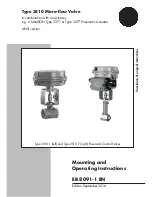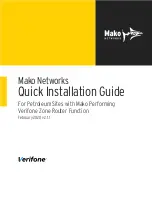
6.4
Antenna
Placement
and
Routing
The
antenna
is
the
element
used
to
convert
the
guided
waves
on
the
PCB
traces
to
the
free
space
electromagnetic
radiation.
The
placement
and
layout
of
the
antenna
are
the
keys
to
increased
range
and
data
rates.
Table
6
‐
2
provides
a
summary
of
the
antenna
guidelines.
Item
Guidelines
1
Place
the
antenna
on
an
edge
or
corner
of
the
PCB.
2
Ensure
that
no
signals
are
routed
across
the
antenna
elements
on
all
the
layers
of
the
PCB.
3
Most
antennas,
including
the
chip
antenna
used
on
the
booster
pack,
require
ground
clearance
on
all
the
layers
of
the
PCB.
Ensure
that
the
ground
is
cleared
on
inner
layers
as
well.
4
Ensure
that
there
is
provision
to
place
matching
components
for
the
antenna.
These
must
be
tuned
for
best
return
loss
when
the
complete
board
is
assembled.
Any
plastics
or
casing
must
also
be
mounted
while
tuning
the
antenna
because
this
can
impact
the
impedance.
5
Ensure
that
the
antenna
impedance
is
50
Ω
because
the
device
is
rated
to
work
only
with
a
50
‐Ω
system.
6
In
case
of
printed
antenna,
ensure
that
the
simulation
is
performed
with
the
solder
mask
in
consideration.
7
Ensure
that
the
antenna
has
a
near
omni
‐
directional
pattern.
8
The
feed
point
of
the
antenna
is
required
to
be
grounded.
This
is
only
for
the
antenna
type
used
on
the
CC3120MOD
BoosterPack.
Refer
to
the
specific
antenna
data
sheets
for
the
recommendations.
Table
6
‐
2:
Antenna
Guidelines
6.5
Transmission
Line
Considerations
The
RF
signal
from
the
device
is
routed
to
the
antenna
using
a
Coplanar
Waveguide
with
ground
(CPW
‐
G)
structure.
The
CPW
‐
G
structure
offers
the
maximum
amount
of
isolation
and
the
best
possible
shielding
to
the
RF
lines.
In
addition
to
the
ground
on
the
L1
layer,
placing
GND
vias
along
the
line
also
provides
additional
shielding.
Figure
6
‐
5
shows
a
cross
section
of
the
coplanar
waveguide
with
the
critical
dimensions.
Figure
6
‐
5:
Coplanar
Waveguide
(Cross
Section)
















































